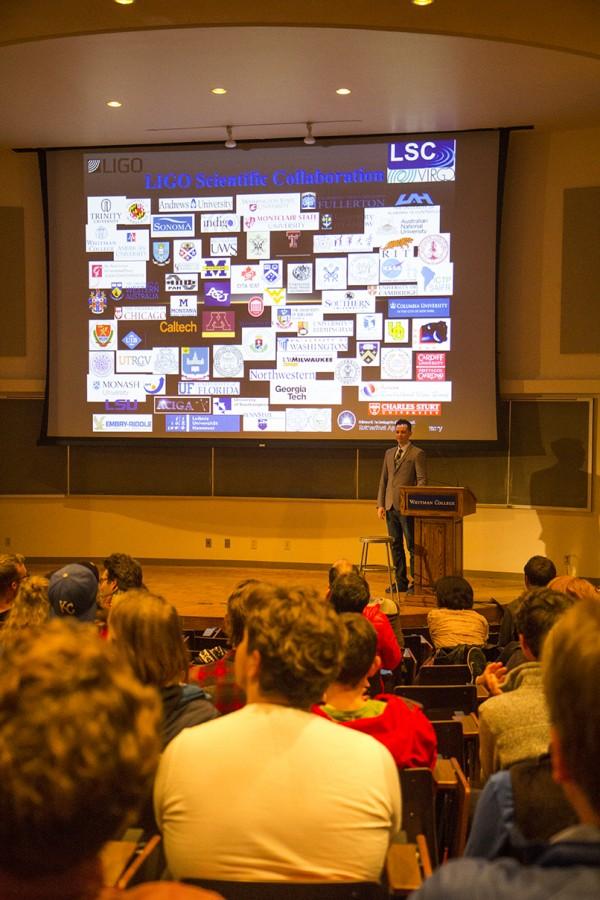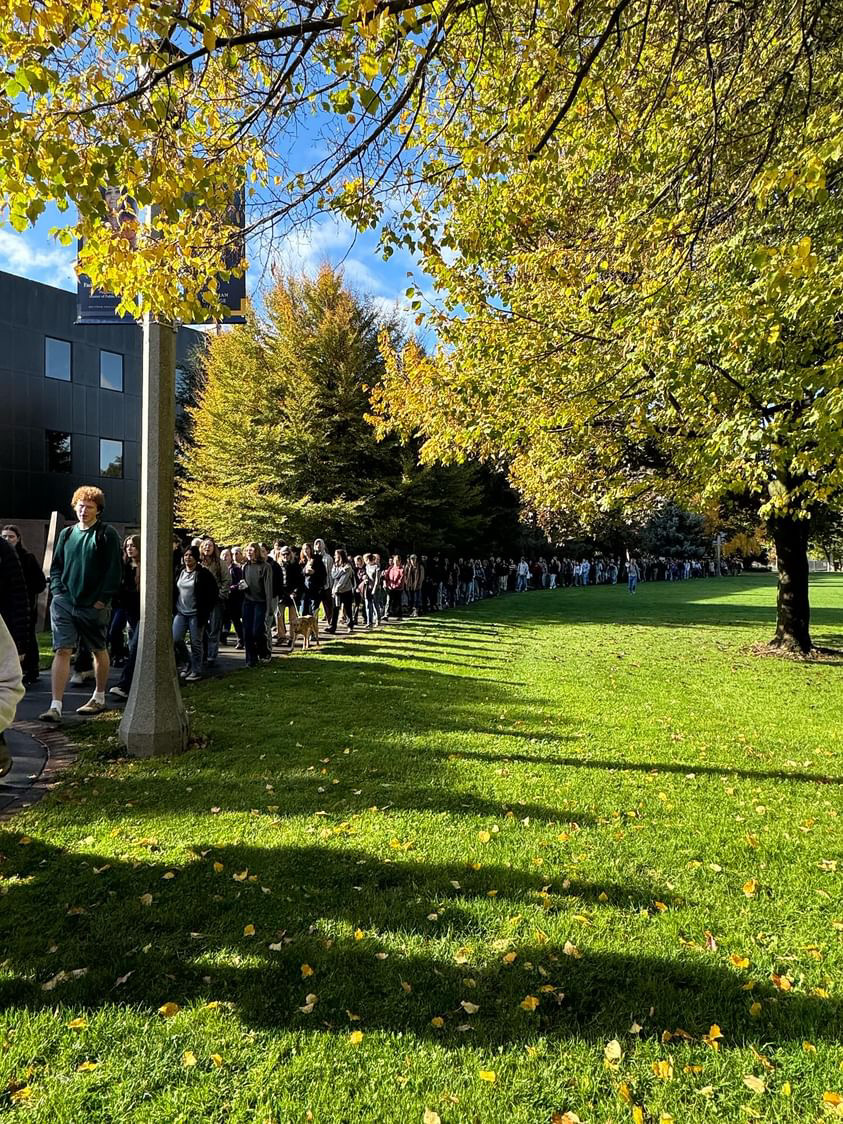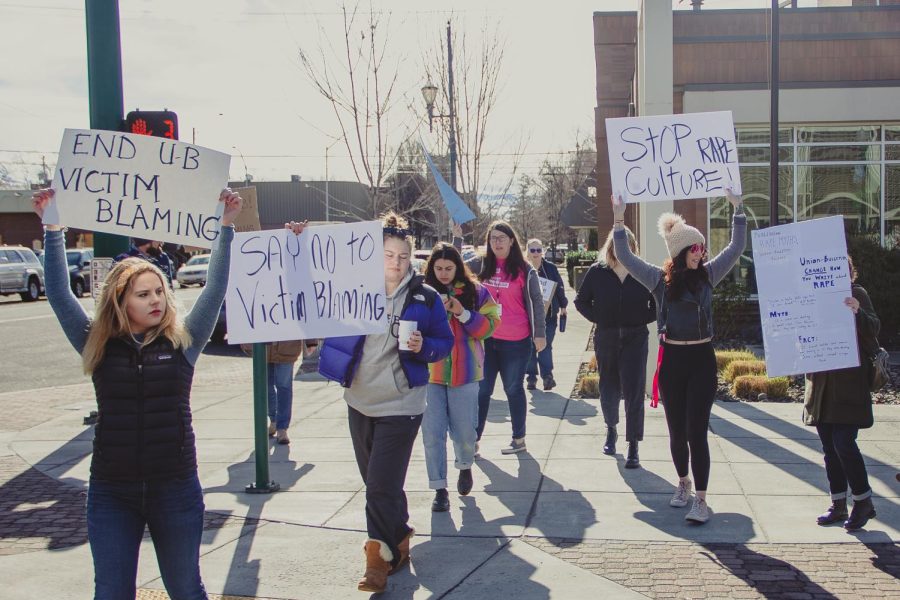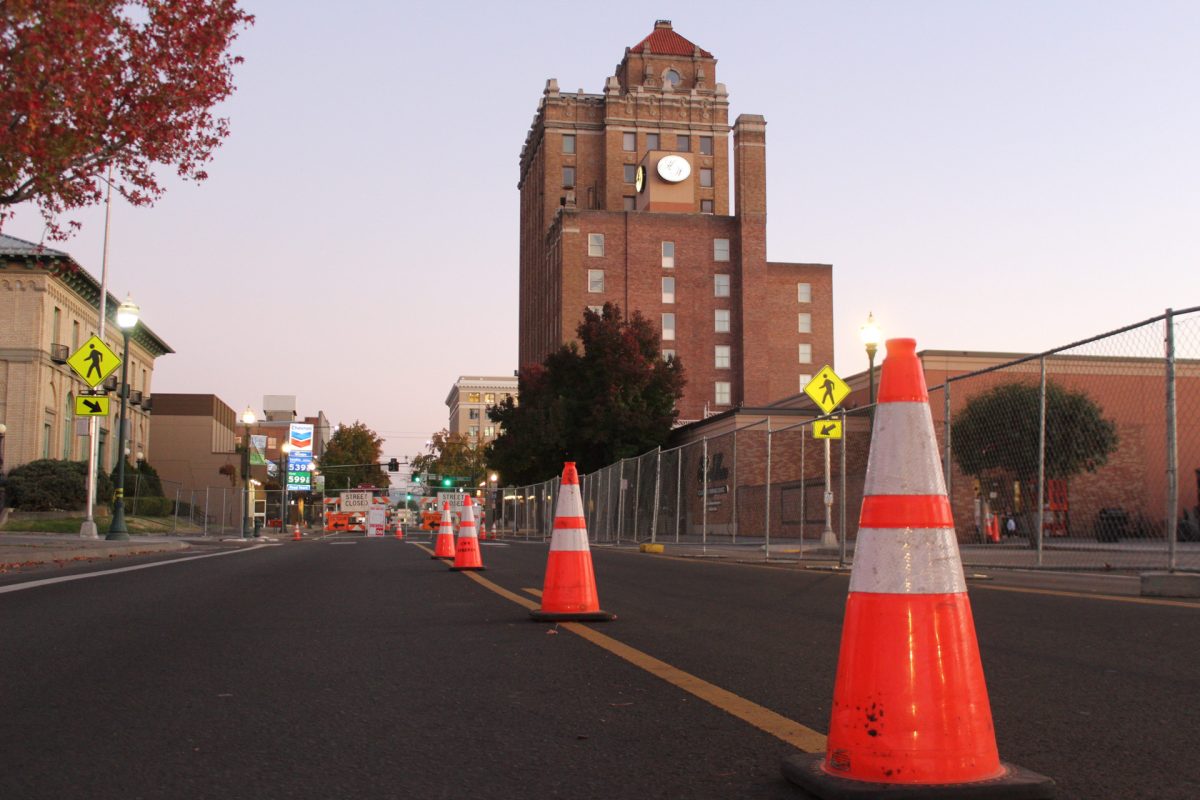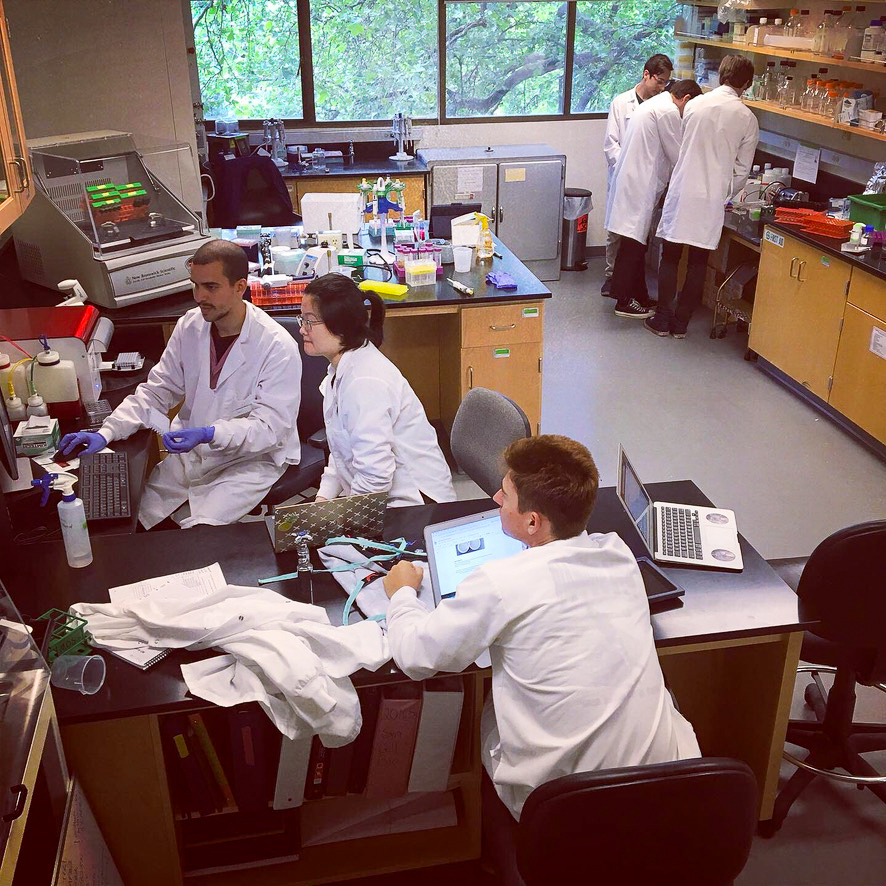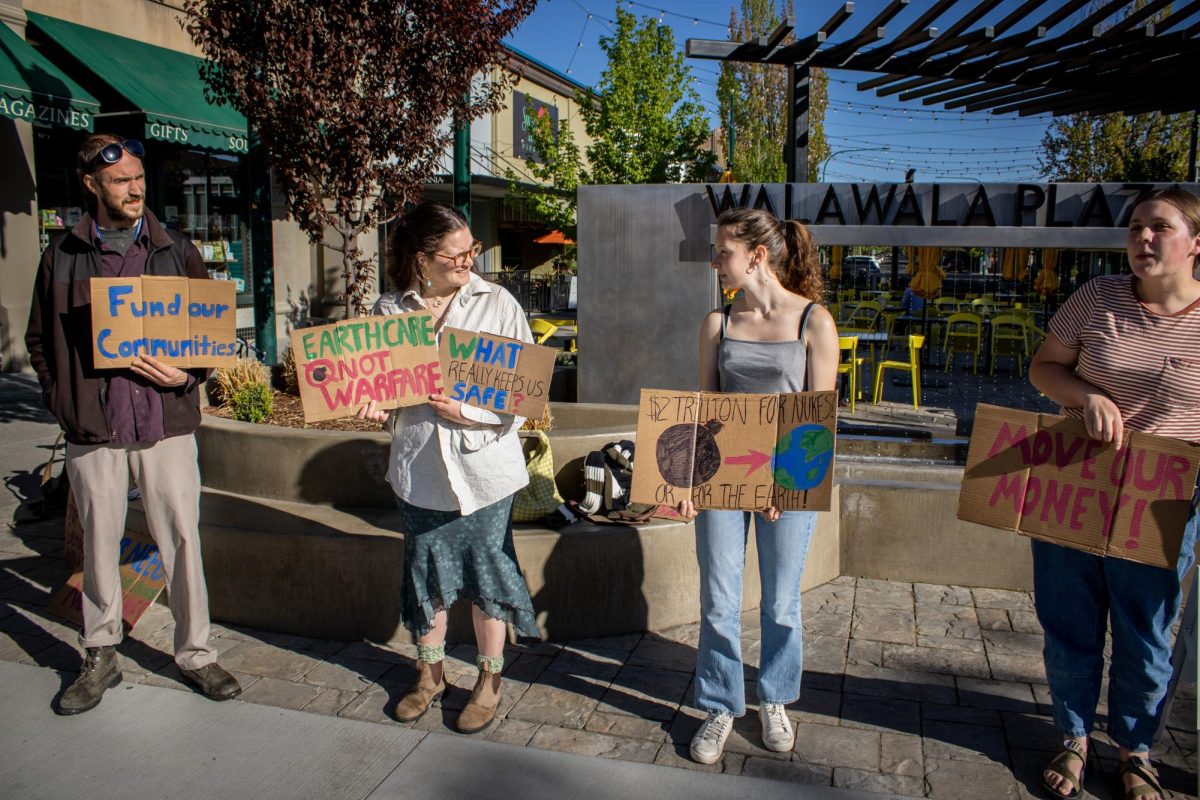One hundred years ago, Einstein developed his theory of General Relativity. Today, a team of physicists from around the world, including a Whitman professor, announced they had the evidence to prove it.
At 7:30 a.m. on Thursday, February 11, students and faculty gathered in the Hall of Science, waiting to hear an announcement from a LIGO (Laser Interferometer Gravitational-Wave Observatory) press conference in Washington DC. The announcement was one of the greatest discoveries in physics within the century: experimental evidence of gravitational-waves.
Greg Ogin, Assistant Professor of Physics at Whitman College, is part of the LIGO Scientific Collaboration and was involved in the discovery. Ogin spoke to the Whitman community at 4 p.m. later that day to explain the project.
“The implications of this moving forward give people like me goosebumps… Einstein figured out that these [General Relativity] equations would support waves, but thought that we would never see them in science,” Ogin said, launching into his lecture. His talk discussed the difficulties of trying to measure the gravitational-waves.
There are two laser interferometer detectors in the United States, one in Livingston, Louisiana and one in Hanford, Washington. Each detector’s laser beam is close to four kilometers long. Laser detectors are designed to measure huge energy sources from very far away by measuring slight disruptions (signals) that waves make to time and space. Despite the gigantic components, they result in miniscule signals, just little, abnormal increases in energy and it it is challenging to distinguish these signals from noise.
“The whole name of the game is figuring out what part of your signal is noise, so that when you see the actual signal you can tell what it is,” Ogin said. The noise was caused by seismic, thermal, quantum and gaseous energy, all of which are at vastly different frequencies and challenging to remove from the system. “This type of noise is why it takes hundreds, thousands of scientists to eliminate the fuzz.”
On September 14, 2015, the laser detector detected a small signal. This signal was likely indicative of a binary black hole inspiral; two black holes merging into one. As they merged they released 3 solar masses of energy in the form of gravitational waves, and then some of that energy traveled 1.3 billion light years back to earth.
“That’s kind of astonishing. 1.3 billion light years away, so the merge didn’t happen in September–it happened 1.3 billion years before last September.”
Ogin has also brought Whitman research students with him to study LIGO. For the past two summers students have analyzed data for sources of noise.
Senior Greg Holdman worked with Ogin the summer after his sophomore year, providing the theoretical background to explain possible results. Ogin’s research at the time studied the effects of random temperature changes that were causing noise in the mirrors inside LIGO.
“I think that [experimental evidence of gravitational-waves] will add to the number of students interested in [physics and astronomy]. Current students who were not aware of Ogin’s work will certainly be more likely to discover they may be interested. Or they may look into physics and discover a field they didn’t know they loved,” Holdman said in an email to The Pioneer.
The excellence of this discovery was not lost on the Whitman community. Mark Beck, Professor of Physics and Chair of the Division of Mathematics and Natural Sciences, chimed in on the announcement.
“We were all there [on Thursday] morning, even Kathy Murray. It was great. When they made the announcement…everybody applauded. You could sense that everyone was really happy.”
According to the BBC, experimental evidence of gravitational-waves will likely result in a Nobel Prize. Ogin could not contain his excitement during his lecture. “We have done it. We have shown that you can detect a gravitational-wave… It is a really, really exciting time to be involved in gravitational physics.”





